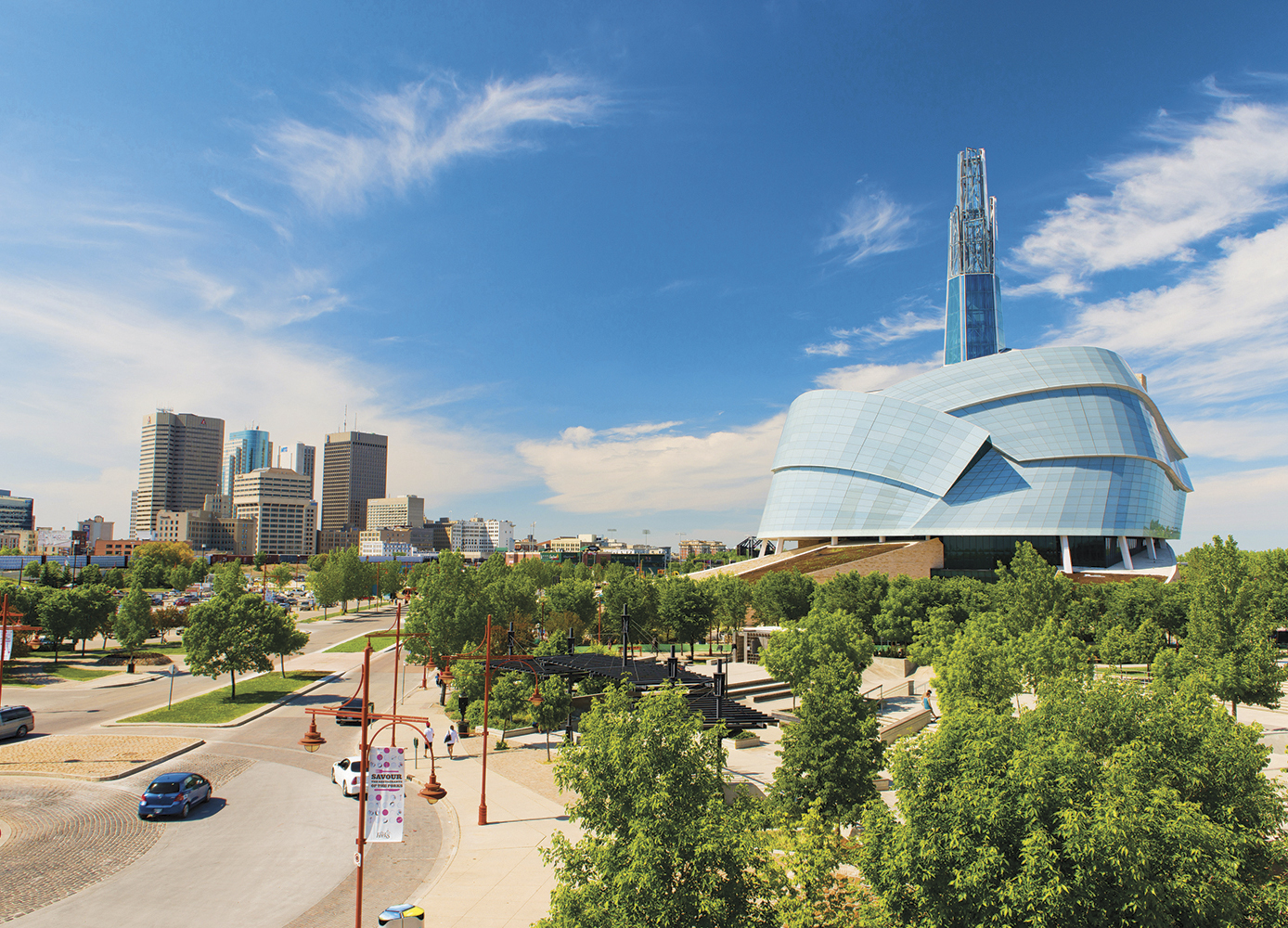Culture and the arts, entertainment and recreation, affordable homes and excellent medical facilities…Winnipeg has a lot to offer retirees.
By Wendy Haaf
If you have doubts about Winnipeg as a retirement destination, prepare to be surprised—awed, even—by what Canada’s seventh largest metropolitan centre (population 811,874) has to offer.
“There’s a huge variety of things to do here,” says Linda Goodbrandson, 65. From orchestras (symphony, jazz, and chamber), ballet, and opera to multiple galleries, performing arts venues, museums, and a planetarium, there’s an extensive smorgasbord of arts, culture, and entertainment from which to choose. “I’m into the theatre, so I have tickets to a couple of things,” Goodbrandson says.
In addition to donating her time at an adult literacy centre, the retired school librarian also volunteers at the Human Rights Museum, as well as the Shakespeare in the Ruins theatre company.
“There are lots of festivals in the summer,” says Abe Borzykowski, 64, who, with his wife, Brenda, moved here from Toronto 37 years ago. “Some are free,” he adds, and themes range from comedy to Aboriginal culture. The couple now lives near downtown, and “we just love it,” Brenda says. “Concert halls, touring shows, and hockey games are all within walking distance,” Abe explains. (In addition to professional hockey and football teams, Winnipeg is also home to the Goldeyes pro independent league baseball team, as well as the Blues, a junior A hockey team.)
Lifelong learning opportunities also abound, including lecture series at museums and other institutions, and classes offered at one of 20 public library branches or 19 seniors’ and 55+ centres or thought the not-for-profit Creative Retirement Manitoba and the University of Winnipeg’s continuing education 55-plus program.
For instance, Archwood 55 Plus Inc., offers workshops on painting, computers, and technology, as well as activities such as mahjong, meditation, pickleball, circuit training, floor curling, and a monthly luncheon social. “Today there’s a bus trip to Chinatown for a dim sum lunch and tea,” says Marie Lunn, one of 58 volunteers who keep the centre running. “There are a lot of things in Winnipeg for seniors,” Brenda Borzykowski says. “A lot.”
Winnipeg also has a host of other community centres and recreational facilities, as well. In Goodbrandson’s neighbourhood at the edge of the city, for example, “is a brand-new field house with all kinds of exercise equipment.” And whether you enjoy golf (there are three municipal courses alone), snowshoeing, fishing, or cross-country skiing, there are innumerable places to pursue outdoor activities.
“People don’t stay in their houses in the winter,” Brenda says. (This may be partly because Winnipeg is purportedly one of the sunniest cities in Canada.) You can skate along the Red River or at one of several outdoor rinks, including one at the Assiniboine Park Zoo, or go downhill skiing or snowboarding at Springhill Winter Park. At Fortwhyte Alive, a 640-acre (2.6 square kilometre) environmental, educational, and recreation centre in the city’s southwest, you can cross-country ski and snowshoe during the winter, and in the summer, canoe, sail and hike. For those who love the water, Brenda says, “You can be at multiple beaches almost within an hour.”)
The city also has a bike-lane system and a growing network of bicycling and walking paths. “There are some really good walking groups here,” Linda Goodbrandson says. “I belong to one, and we walk every Monday morning, year-round. People tend not to believe me when I say that, but we do!”
Have a passion for food? Whether your fancy is fine dining, food trucks, farmer’s markets, ethnic grocery stores, or tiny hole-in-the-wall diners serving authentic international dishes, Peg City has something to satisfy every taste. To give you an idea of how seriously residents take the subject, Tourism Winnipeg’s website lists four magazines and a dozen blogs dedicated to food.
“It’s just heaven,” Linda Goodbrandson says. Menus reflect a rich stew of cultures, from Ukrainian and Chinese to Vietnamese, Filipino, Cuban, Salvadoran, and Ethiopian. You can even do a culinary tour of the globe via the city’s nearly 50 food trucks, sampling wood-fired pizza, sour-cherry dessert pirogies, gluten-free tacos, vegetarian Japanese curry, pulled-pork on bannock, Louisiana gumbo, and barbecue made with local grass-fed beef.
Affordable home prices (averaging $266,837), efficient traffic (driving across the city takes 45 minutes), an extensive public transit system, easy access by air via both the city’s James Armstrong Richardson International Airport and the Internation Airport in Grand Forks, ND (approximately two and a half hours away by car), and excellent medical facilities (including one of the country’s top-rated cardiac institutes), are just a few of the city’s many other assets.
No doubt these number among the qualities that led the Borzykowskis’ kids to relocate here and have lulled other newcomers to put down roots, as well.
“It’s a great community, it’s very friendly, it’s comfortable,” Abe Borzykowski says. “It’s a different lifestyle that I think people would find pleasing if they tried it. We know lots of people—medical professionals and academics—who came here to take a position and they never left.”
Photo: Tourism Winnipeg/Dan Harper.






